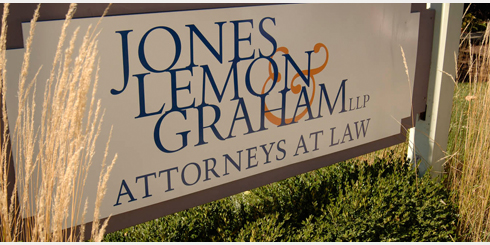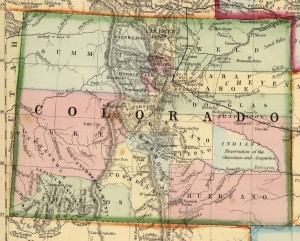Will your claims-made liability insurer pay when policy-period and pre policy-period claims arise out of “interrelated wrongful acts”?
by: Chris Graham and Shelly Hall
The issue: Today’s post is about a recurring issue for claims-made liability insurers and their policyholders: whether a claim arises out of the same or related “Wrongful Acts” as alleged in an earlier claim. If you’re the underwriter, you won’t want to insure a claim that that arises out of the same or related Wrongful Acts as alleged in an earlier claim; or, if you wrote the risk when the earlier claim was made, you’ll at least want to make sure the earlier and new claims are treated as a single claim so that only one limit of liability applies. If you’re a policyholder, you’ll obviously want as broad of coverage as is available. The “relatedness” issue has been litgated frequently. And the litigation outcome will depend on the contract wording and the facts alleged in the underlying claims. Today’s post is about a recent case involving an “interrelated wrongful acts” definition—including pro-insurer “common nexus” wording—that meant that the policyholder would lose.
A Big Easy shoot-out, a City surveillance system, and alleged bid rigging and kick-backs: New Orleans; 2003. There’s a shoot-out. Surveillance cameras capture it. Police as a result nab the bad guys. Great thing! Let’s do it City-wide, says the Mayor. Let’s invite bids. And then the “fun” begins. There are at least three companies involved; we’ll call them “A,” “B,” and “C.” There also are City employees who, depending on who you believe, allegedly steer the work to A, B, or both in exchange for subcontracts and other “favors.” A thinks B is colluding with City employees to cut it out of the City work. C thinks A and B are doing the same thing to it.
A’s 2007 lawsuit against B: In 2007, A sues B, the City employees, and their companies. A alleges that it collaborated with the City to develop a surveillance system; the City and A signed a contract in July 2004; the City promised to keep A’s “technology” confidential; City employees told A that A needed to hire them as subcontractors, but A refused; the Mayor’s Office of Technology then contracted technology work to B; and then B and City employees stopped authorization of A’s work and failed to order and authorize payment for cameras, shared A’s confidential information, and conspired to manufacture a copy of A’s system, sell it to Monster Company, and illegally sell it throughout the State. A and B eventually settle.
B’s 2009 claims-made policy: Fast-forward to 2009. B purchases a Digital and Technology Professional Liability Policy, effective July 1, 2009 to July 1, 2010. Subject to its terms, the policy covers certain claims made during the policy period. As is typical for claims-made policies, this policy carves-out coverage for claims—associated with the circumstances of past claims, such as A’s 2007 lawsuit against B. Thus, “[a]ll claims arising out of the same wrongful act and all interrelated wrongful acts of the insureds shall be deemed to be one claim, and such claim shall be deemed to be first made on the date the earliest of such claims is first made, regardless of whether such date is before or during the policy period.” “[I]nterrelated wrongful acts” means “all wrongful acts that have as a common nexus any fact, circumstance, situation, event, transaction, cause or series of related facts, circumstances, situations, events, transactions or causes.” So what happens next?
C’s 2009 lawsuit against B: C sues B, A, and City employees and their companies, about the same surveillance system at issue in A’s 2007 suit against B. C alleges that it co-developed the system; City employees steered the City contract to A; A in exchange agreed that City employees would assume C’s role in the project and be involved in system sales outside the City; City employees also steered City technology work to B; B in exchange steered its subcontract work to City-employees; and B and those City employees misappropriated C’s confidential information.
The coverage litigation: B tendered the defense of C’s 2009 lawsuit to its claims-made insurer, which refused to defend. B then sued for a declaration of coverage. So who wins?
The decision: In a decision involving a scenario along the lines described above, a Colorado Federal Judge said that the insurer wins. Ciber, Inc. v. ACE American Insurance Company, Civil Action No. 16-cv-1189-WJM-NYW, Dist. Court, D. Colorado, July 9, 2017. According to the Court:
Based on the broad definition of “interrelated wrongful acts” …, as well as the substantially similar factual web surrounding the [2007] and [2009 lawsuits], the Court is persuaded by ACE’s contention that the two proceedings involve a “single scheme”—namely, [(B’s)] alleged participation in a conspiracy to use city employee-run entities as subcontractors to circumvent the July 2004 Contract and misappropriate the surveillance camera project.
In the Court’s view, the allegations in the [2007] and [2009 lawsuits] both arose out of a “single scheme” directed at the developer of the wireless surveillance system (whether [A] alone or in partnership with [C], involving a single contract (the July 2004 Contract), implicating the same transaction or series of transactions involving the surveillance camera project, and seeking a single outcome (to cut out the originators of that system from current and future business dealings). This “single scheme” provides the Court with a sufficient basis upon which to conclude that the [2007] and [2009 lawsuits] share (or are connected and linked by) a common “series of related facts, circumstances, situations, events, transactions or causes.”
The 2009 lawsuit, thus, would be treated as a single claim with the 2007 lawsuit and deemed made in 2007, before inception of the July 1, 2009-2010 policy period; so there’s no coverage.
B argued that “the dictionary’s primary definition [of nexus] is ‘a causal link’ [and] courts construe this causation requirement to include both but-for cause and proximate cause”; “[s]everal courts have followed [this causation] approach in denying insurance carriers’ attempts to limit coverage under interrelated wrongful act provisions”; and that “[b]ecause there is no causal link between all claims in the [2007 lawsuit] and those in the [2009 lawsuit], there is a possibility of coverage, leaving ACE with a duty to defend.”
But according to the Court: “Looking at the plain language of the term ‘interrelated wrongful acts’ and its definition under the Policy…there is no basis to conclude that this Policy term incorporates a causal relationship or ‘but-for’ test.” The Court, thus, would “only examine the record to determine whether there is a ‘connection’ or ‘link’ between the facts or occurrences underlying the alleged ‘wrongful acts’ present in the [2007 and 2009 lawsuits].”
In reaching its decision, the Court distinguished the policyholder’s “causation” cases as based on different related wrongful cats wording. It also cited ACE Am. Ins. Co. v. Ascend One Corp., 570 F. Supp. 2d 789, 798 (D. Md. 2008), KB Home v. St. Paul Mercury Ins. Co., 621 F. Supp. 2d 1271, 1277 (S.D. Fla. 2008), Nat’l Title Agency, LLC v. United Nat’l Ins. Co., 2016 WL 1092485, at *3 (D. Utah Mar. 21, 2016), and Old Bridge Mun. Utilities Auth. v. Westchester Fire Ins. Co., 2016 WL 4083220, at *4–5 (D.N.J. July 29, 2016), which rejected a “but-for” test for “nearly identical definitions of the term ‘interrelated wrongful acts.’”
Comments: Compared to this ACE policy, there are narrower “interrelated” or “related wrongful acts” definitions in certain claims-made policies including definitions requiring a causal connection, including the policy at issue in one of the cases cited by ACE’s policyholder. One claims-made community association D&O policy provides, for example, that “’Related Wrongful Acts’ shall mean Wrongful Acts which are causally connected by reason of any common fact, circumstance, situation, transaction, casualty, event or decision.” Given the “interrelated wrongful acts” definition in the ACE policy, ACE didn’t have to show a causal connection between facts or occurrences underlying the wrongful acts alleged in the 2009 suit and those alleged in the 2007 suit. Plaintiffs in the 2007 and 2009 suits differed, but both suits alleged the same scheme involving the policyholder’s supposed “kick-backs” to City employees in exchange for allegedly steering it City work. This is the kind of scenario the “interrelated wrongful acts” wording was aimed at
Category: D&O Digest, Professional Liability Insurance Digest, Uncategorized Comment »

